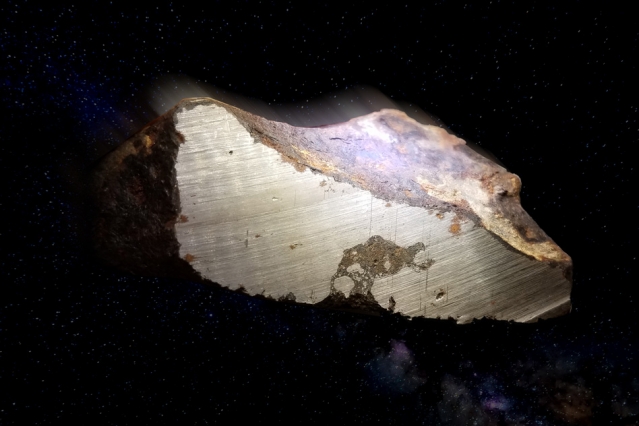Astronomy postdoc Valerie Payré is on an international team that discovered the origin of the martian meteorite known as Black Beauty, one of the most-studied meteorites in the world. It may hold clues to the development of Earth and other terrestrial planets and help explain why Earth sustains life when its closest neighbor does not.
Tag: Meteorite
Mars habitability limited by its small size, isotope study suggests
Researchers measured the potassium isotope compositions of Martian meteorites in order to estimate the presence, distribution and abundance of volatile elements and compounds, including water, on Mars, finding that Mars has lost more potassium than Earth but retained more potassium than the Moon or the asteroid 4-Vesta; the results suggest that rocky planets with larger mass retain more volatile elements during planetary formation and that Mars and Mars-sized exoplanets fall below a size threshold necessary to retain enough water to enable habitability and plate tectonics.

Ceramic chips inside meteorites hint at wild days of the early solar system
A new analysis of ceramic chips embedded in meteorites suggests the formation of our solar system was not as quiet and orderly as we once thought.

X-Rays Recount Origin of Oddball Meteorites
X-ray experiments at Berkeley Lab played a key role in resolving the origin of rare, odd meteorites that have puzzled scientists since their discovery a half-century ago. Known as type IIE iron meteorites, they appear to have originated from a parent body that had a composition featuring both fully melted and unmelted parts – other meteorite types display only one composition.

‘Curious and curiouser!’ Meteorite chunk contains unexpected evidence of presolar grains
An unusual chunk in a meteorite may contain a surprising bit of space history, based on new research from Washington University in St. Louis. Presolar grains — tiny bits of solid interstellar material formed before the sun was born — are sometimes found in primitive meteorites. But a new analysis reveals evidence of presolar grains in part of a meteorite where they are not expected to be found.

Boise State Scientists Develop New Method to Extract Cyanide from Meteorites
Meteorites long have been mysterious and awe inspiring for human beings, but research conducted at Boise State University illustrates a new source of fascination: researchers have discovered organometallic compounds containing both cyanide and carbon monoxide in select rocks from outer…